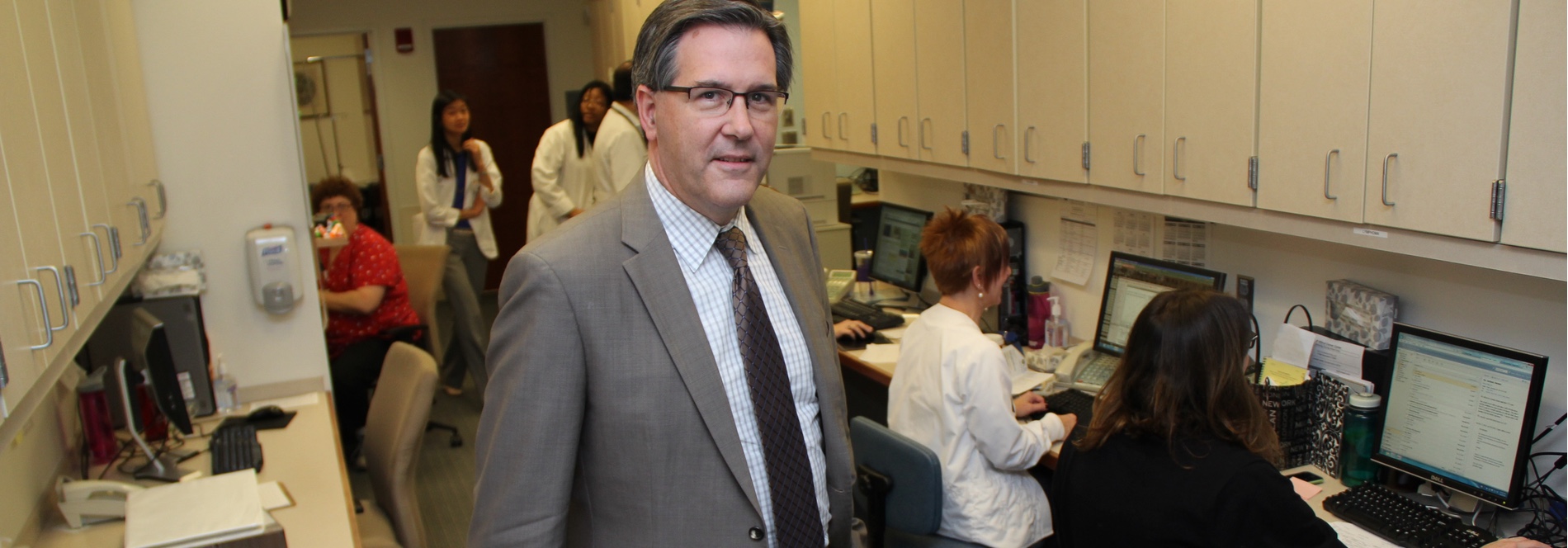Gallbladder Cancer
Gallbladder cancer almost always begins in the gland cells that make and release fluids or bile. The small, pear-shaped organ that sits under the liver stores bile, a fluid that helps digest fats as foods pass through the small intestine. You do not need a gall bladder to live a normal life.
Gallbladder malignancies are in a group known as gastrointestinal (GI) cancers, and Wilmot offers the largest team of GI specialists in the Finger Lakes region. Wilmot also offers the most advanced treatments and technology, including clinical trials testing the latest therapies.
Types of gallbladder cancer
Adenocarcinoma is by far the most common type. Papillary adenocarcinoma is one subtype (about 6 percent are papillary) that has a better prognosis because it's less likely to spread into the liver or nearby lymph nodes. Other cancer types, such as squamous cell carcinoma or sarcomas, can develop in the gallbladder but they are very rare.
Gallbladder cancer facts
About 11,000 new cases of cancer in the gallbladder and nearby large bile ducts are diagnosed annually in the U.S. Gallbladder cancer occurs twice as often in women as in men. The five-year survival rate is up to 80 percent if the cancer is caught early.
Causes and risk factors
Having gallstones, which are pebble-like collections of cholesterol, is the leading risk factor for gallbladder cancer, probably because the stones indicate chronic inflammation. But not everyone with gallstones gets gallbladder cancer. Being female and having gallstones boosts the risk. Other risk factors include:
- Obesity and being overweight, which increases the risk of gallstones.
- Ethnicity and geography. Native Americans and Mexican Americans are at highest risk, and the risk is lowest among African Americans. People who live in India, Pakistan, Central Europe, and South America are more likely to get gallbladder cancer.
- Porcelain gallbladder, a condition where the wall of the gallbladder is covered with calcium deposits.
- Abnormalities of the bile ducts, perhaps due to the backwards flow of fluids into the bile ducts and gallbladder instead of the bile moving properly into the digestive tract. Some people with ulcerative colitis can also have abnormal scarring and inflammation of the bile ducts, which boosts the risk of cancer.
- Gallbladder polyps, which can be formed from calcium deposits or from malignant or pre-cancerous cells.
- Typhoid, a rare bacterial infection, also increases the risk.
Prevention
Many of the risk factors — age, gender, ethnicity, and bile duct abnormalities — are not in our control. But chronic inflammation in the gallbladder can lead to gene mutations associated with gallbladder cancer, and several things can ease inflammation. Maintaining a healthy weight and eating a healthy diet with plenty of fruits, vegetables, and whole grains is recommended. Sometimes doctors suggest removal of the organ if longstanding disease results in porcelain gallbladder or severe gallstones.
Screening
There is no reliable screening test, and it can be difficult to detect gallbladder cancer early because the organ is deep inside the body and tumors cannot be easily seen or felt.

